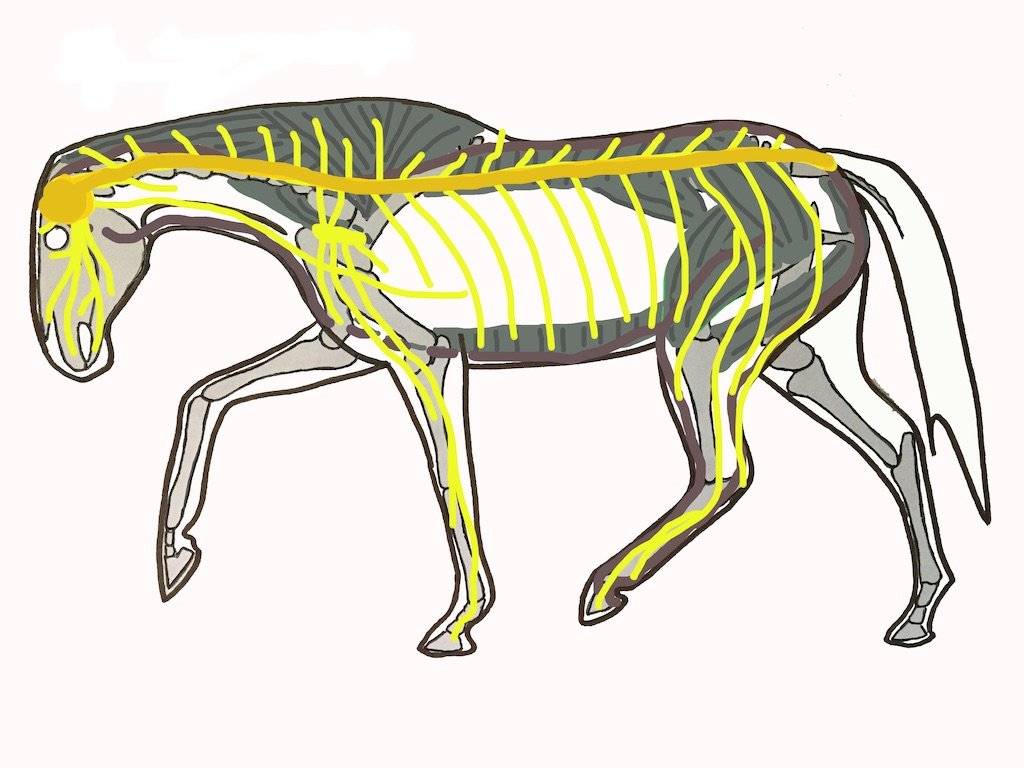How to retrain a horse
Here is a closer look at the ingredients of teaching good posture – communication, coordination and strength.
Good posture is the result of good communication, coordination and a strong core.
Last week we talked a little bit about the prerequisites for good posture. Before we can start jumping fences, going on trail rides or doing fancy dressage movements with the horse we are retraining, there are three things we need to address in training – communication, coordination and strength. Today we will look a bit more closely at each of these.
Communication. Before we can teach the horse anything, we need to establish a mutual language. There are many ways of doing this and not every horse will respond equally well to the same approach. In much the same way, not all people prefer the same way of communicating with horses. Some might prefer to work with treats, others might try mirroring, still others might be more comfortable with pressure and release. Whatever your preferred way, the key thing is consistency. We will never establish a solid communication base if we keep changing the alphabet every day. The other big thing is volume. If you have to shout (literally or figuratively) for your horse to hear you, your communication is not there yet. Communicating in a stress free (literal or figurative shouting free) way is the only way to create trust and a connection strong enough for the horse to allow you to tell him how to use his body in a different way.
Coordination. Horses in retraining will more often than not have issues with unhealthy movement patterns. Lucky for us, the nervous system can learn and adapt, which means it can create new, healthier movement patterns. Training geared towards re-educating the nervous system will differ from training aimed towards strengthening the muscles. When working with the nervous system, we need to keep the movements small, gentle and slow. In the beginning there will be a lot of very boring looking work in walk – showing the horse how to place his legs, how to use his thoracic sling and how to coordinate his spine. Keep the sessions short and above all else, relaxed.
The nervous system requires few repetitions of gentle, relaxed movements.
Strength. Making the horse in retraining stronger does not include high jumps, steep hills or speed training. Before we can do all that, we need to strengthen his core. We can only do that once he's learned how to use it in the first place, which is why training the nervous system comes first. Core strengthening exercises can be done while standing still (like carrot stretches) or in hand/on the lunge (like transitions or tempo changes). When the horse has a strong core and knows how and when to use it, we can start working on the strength of the bigger, movement producing muscles. It is only at this point that »normal« training becomes ok. Only after we've established good communication, taught the horse how to use his body and strengthened his core. If we take a horse in re-training and start riding and doing all the »normal« stuff, we will be back to square one before we know it. There are no shortcuts. If we want a healthy horse, we need to take the long way. It might take a long time, but I guarantee it, it will be well worth the effort.
When thinking of the muscular system, we need to keep in mind that the core strength needs to be there before we can do all the fancy movements.


